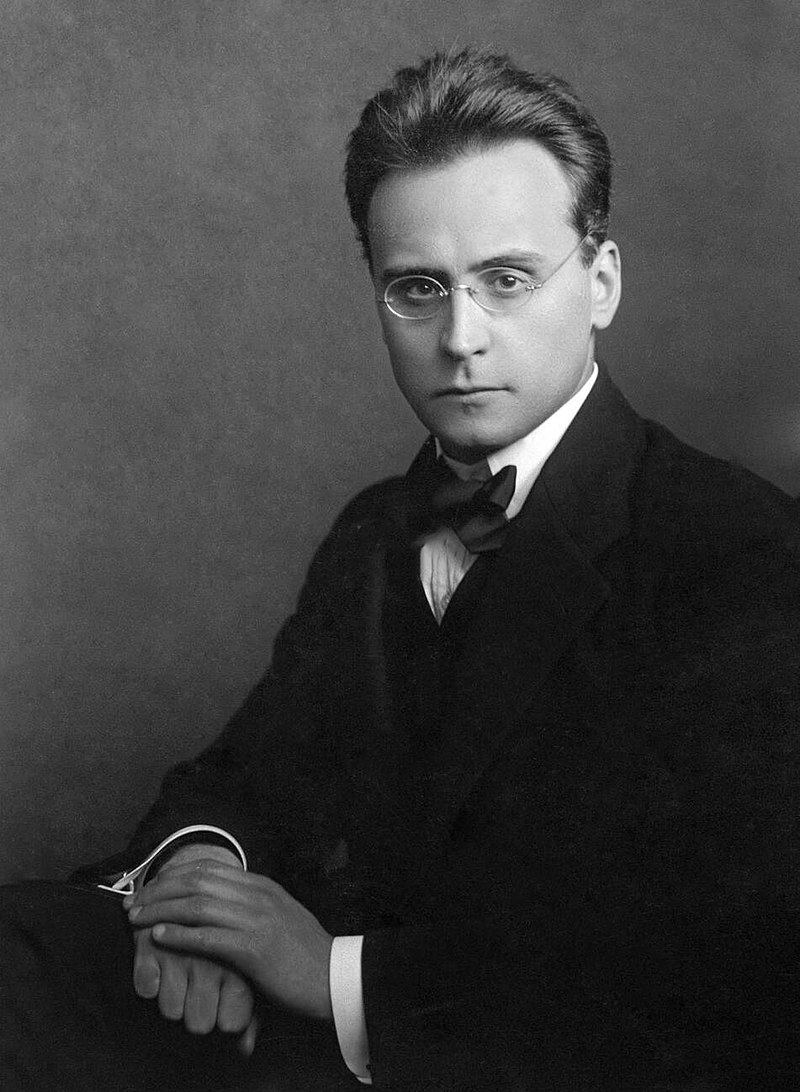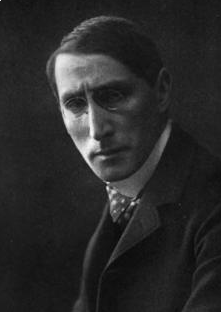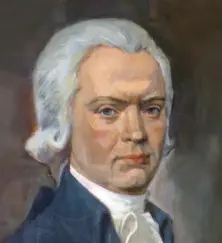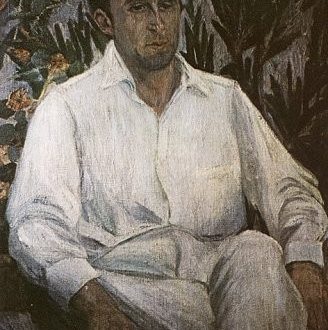
Anton von Webern |
Anton von Webern
The situation in the world is becoming more and more terrible, especially in the field of art. And our task is getting bigger and bigger. A. Webern
The Austrian composer, conductor and teacher A. Webern is one of the most prominent representatives of the New Viennese school. His life path is not rich in bright events. The Webern family comes from an old noble family. Initially, Webern studied piano, cello, the rudiments of musical theory. By 1899, the first composer’s experiments belong. In 1902-06. Webern studies at the Institute of Music History at the University of Vienna, where he studies harmony with G. Gredener, counterpoint with K. Navratil. For his dissertation on the composer G. Isak (XV-XVI centuries), Webern was awarded the degree of Doctor of Philosophy.
Already the first compositions – the song and the idyll for orchestra “In the Summer Wind” (1901-04) – reveal the rapid evolution of the early style. In 1904-08. Webern studies composition with A. Schoenberg. In the article “Teacher”, he puts the words of Schoenberg as an epigraph: “Faith in a single-saving technique should be destroyed, and the desire for truth should be encouraged.” In the period 1907-09. the innovative style of Webern was already finally formed.
After completing his education, Webern worked as an orchestra conductor and choirmaster in an operetta. The atmosphere of light music aroused in the young composer an irreconcilable hatred and disgust for entertainment, banality, and the expectation of success with the public. Working as a symphony and opera conductor, Webern creates a number of his significant works – 5 pieces op. 5 for string quartet (1909), 6 orchestral pieces op. 6 (1909), 6 bagatelles for quartet op. 9 (1911-13), 5 pieces for orchestra, op. 10 (1913) – “the music of the spheres, coming from the very depths of the soul”, as one of the critics later responded; a lot of vocal music (including songs for voice and orchestra, op. 13, 1914-18), etc. In 1913, Webern wrote a small orchestral piece using serial dodecaphonic technique.
In 1922-34. Webern is the conductor of the workers’ concerts (Viennese workers’ symphony concerts, as well as the workers’ singing society). The programs of these concerts, which aimed to familiarize the workers with high musical art, included works by L. Beethoven, F. Schubert, J. Brahms, G. Wolf, G. Mahler, A. Schoenberg, as well as the choirs of G. Eisler. The termination of this activity of Webern did not happen by his will, but as a result of the putsch of the fascist forces in Austria, the defeat of the workers’ organizations in February 1934.
The Webern teacher taught (mainly to private students) conducting, polyphony, harmony, and practical composition. Among his pupils, composers and musicologists are K. A. Hartmal, X. E. Apostel, E. Ratz, W. Reich, X. Searle, F. Gershkovich. Among the works of Webern 20-30-ies. — 5 spiritual songs, op. 15, 5 canons on Latin texts, string trio, symphony for chamber orchestra, concerto for 9 instruments, cantata “The Light of the Eyes”, the only work for piano marked with an opus number – Variations op. 27 (1936). Starting with songs op. 17 Webern writes only in the dodecaphone technique.
In 1932 and 1933 Webern gave 2 cycles of lectures on the theme “The Way to New Music” in a Viennese private house. By new music, the lecturer meant the dodecaphony of the New Viennese school and analyzed what leads to it along the historical paths of music evolution.
Hitler’s rise to power and the “Anschluss” of Austria (1938) made Webern’s position disastrous, tragic. He no longer had the opportunity to occupy any position, he had almost no students. In an environment of persecution of the composers of new music as “degenerate” and “cultural-Bolshevik”, Webern’s firmness in upholding the ideals of high art was objectively a moment of spiritual resistance to the fascist “Kulturpolitik”. In the last works of Webern – quartet op. 28 (1936-38), Variations for orchestra op. 30 (1940), Second Cantata op. 31 (1943) – one can catch a shadow of the author’s loneliness and spiritual isolation, but there is no sign of compromise or even hesitation. In the words of the poet X. Jone, Webern called for the “bell of hearts” – love: “may she stay awake where life is still glimmering in order to awaken her” (3 hours of the Second Cantata). Calmly risking his life, Webern did not write a single note in favor of the principles of the fascist art ideologists. The death of the composer is also tragic: after the end of the war, as a result of a ridiculous mistake, Webern was shot dead by a soldier of the American occupation forces.
The center of Webern’s worldview is the idea of humanism, upholding the ideals of light, reason, and culture. In a situation of severe social crisis, the composer shows rejection of the negative aspects of the bourgeois reality surrounding him, and subsequently takes an unambiguously anti-fascist position: “What enormous destruction this campaign against culture brings with it!” he exclaimed in one of his lectures in 1933. Webern the artist is an implacable enemy of banality, vulgarity, and vulgarity in art.
The figurative world of Webern’s art is far from everyday music, simple songs and dances, it is complex and unusual. At the heart of his artistic system is a picture of the harmony of the world, hence his natural proximity to some aspects of the teachings of I. V. Goethe on the development of natural forms. The ethical concept of Webern is based on the high ideals of truth, goodness and beauty, in which the composer’s worldview corresponds with Kant, according to which “the beautiful is a symbol of the beautiful and good.” Webern’s aesthetics combines the requirements of the significance of content based on ethical values (the composer also includes traditional religious and Christian elements in them), and the ideal polished, richness of the artistic form.
From notes in the manuscript of the quartet with saxophone op. 22 you can see what images occupied Webern in the process of composing: “Rondo (Dachstein)”, “snow and ice, crystal clear air”, the second secondary theme is “flowers of the highlands”, further – “children on ice and snow, light, sky ”, in the code – “a look at the highlands”. But along with this loftiness of images, Webern’s music is characterized by a combination of extreme tenderness and extreme sharpness of sound, refinement of lines and timbres, rigor, sometimes almost ascetic sound, as if it were woven from the thinnest luminous steel threads. Webern does not have powerful “spills” and rare long-term escalation of sonority, striking figurative contrasts are alien to him, especially the display of everyday aspects of reality.
In his musical innovation, Webern turned out to be the most daring of the composers of the Novovensk school, he went much further than both Berg and Schoenberg. It was Webern’s artistic achievements that had a decisive influence on the new trends in music in the second half of the XNUMXth century. P. Boulez even said that Webern is “the only threshold for the music of the future.” The artistic world of Webern remains in the history of music as a lofty expression of the ideas of light, purity, moral firmness, enduring beauty.
Y. Kholopov
- List of Webern’s major works →





